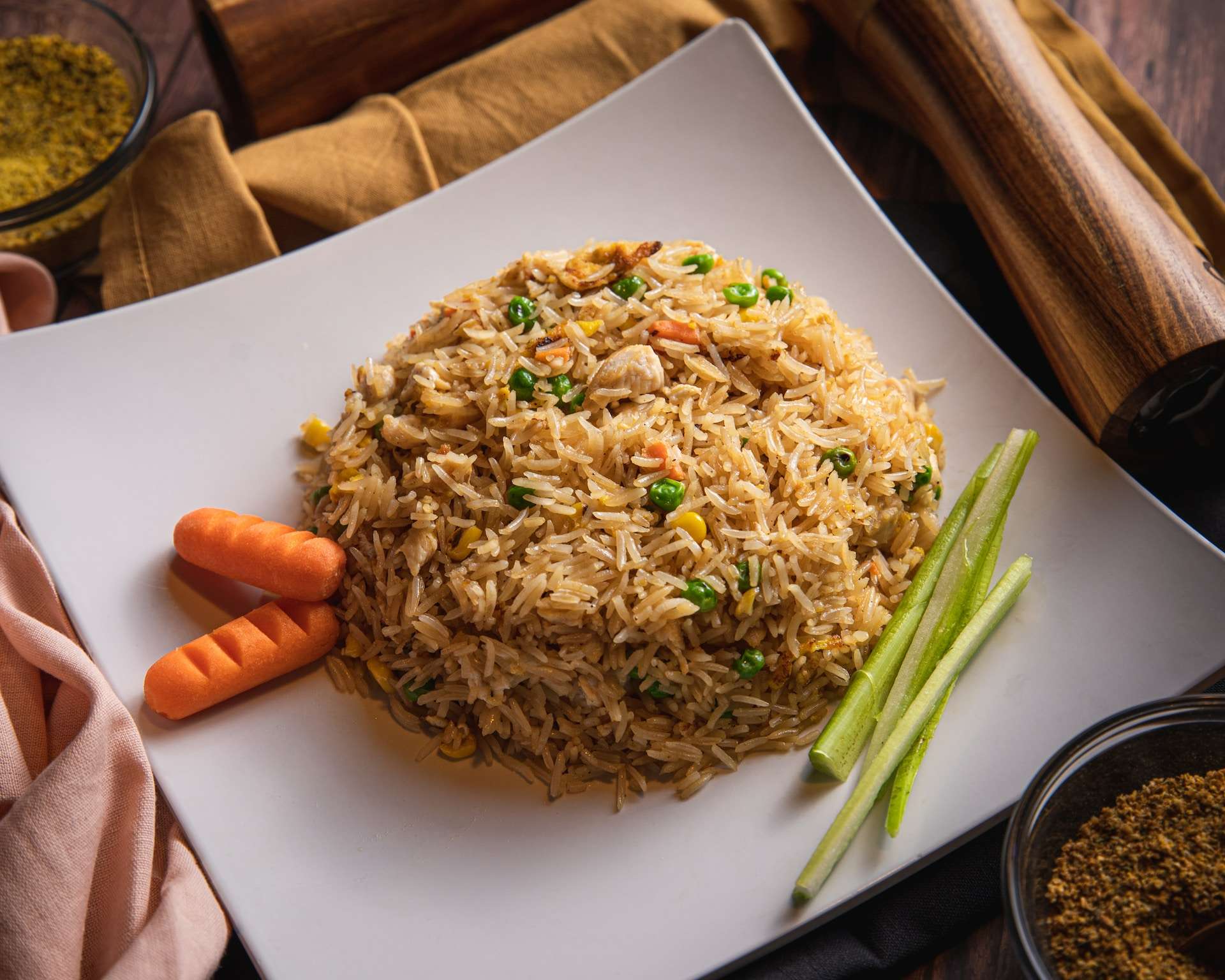
Brown rice is a nutritious and versatile grain that has gained popularity in recent years. With its earthy taste and chewy texture, it serves as a healthy alternative to its white rice counterpart. In addition to the numerous health benefits it offers, brown rice is incredibly versatile and can be incorporated into a wide variety of dishes.
In this article, we will explore 16 fascinating facts about brown rice that will not only expand your knowledge but also inspire you to include it in your diet. From its origin and nutritional content to its cooking methods and culinary uses, we will delve into the world of brown rice and uncover the secrets that make it a staple in many households around the globe.
Key Takeaways:
- Brown rice is a super nutritious whole grain, packed with fiber, vitamins, and minerals. It’s great for digestion, weight management, and heart health, and can be used in a variety of delicious dishes.
- Choosing brown rice over white rice is not only better for your health, but also for the environment. It’s a versatile ingredient that can be used in a wide range of recipes, from stir-fries to desserts.
What is Brown Rice?
Brown rice is a whole grain rice variety that has not undergone the process of milling and polishing, which removes the outer bran layer. It is the most nutritious form of rice and is known for its chewy texture and nutty flavor.
Nutritional Value
Brown rice is rich in essential nutrients such as fiber, vitamins (B-complex vitamins, including thiamin, niacin, and vitamin B6), minerals (such as magnesium, phosphorus, and selenium), and antioxidants. It is a healthy carbohydrate option and provides sustained energy.
Health Benefits
Consuming brown rice offers numerous health benefits. It aids in digestion, helps maintain a healthy weight, reduces the risk of heart disease, and improves overall gut health. It is also gluten-free and suitable for individuals with gluten intolerance.
High in Fiber
Brown rice is an excellent source of dietary fiber, making it ideal for promoting digestive health and preventing constipation. Its high fiber content also helps regulate blood sugar levels and promotes a feeling of fullness.
Versatile Ingredient
Brown rice can be used in a variety of dishes, including stir-fries, salads, soups, and pilafs. It can also be ground into flour to make gluten-free baked goods or used to create rice-based desserts.
Longer Cooking Time
Compared to white rice, brown rice generally requires a longer cooking time, as it retains its bran and germ layers. This longer cooking time helps preserve its nutrients and results in a chewier texture.
Different Varieties
There are various types of brown rice available, including short-grain, medium-grain, and long-grain varieties. Each type has a slightly different texture and cooking time, allowing for a range of culinary creations.
Brown Rice vs. White Rice
Unlike brown rice, white rice has had the bran and germ layers removed, resulting in a lighter texture and milder flavor. However, this process also removes many of the nutrients present in brown rice, making it a less nutritious choice.
Extended Shelf Life
Due to the natural oils in the bran layer, brown rice has a shorter shelf life compared to white rice. To prolong its freshness, it is recommended to store brown rice in a cool, dry place or in the refrigerator.
Popular in Asian Cuisine
Brown rice is a staple in various Asian cuisines, including Japanese, Thai, and Indian. It is often served alongside curries, stir-fries, or used as a base for sushi and rice bowls.
Brown Rice Syrup
Brown rice syrup is a natural sweetener made from fermented brown rice. It is often used as an alternative to corn syrup or other refined sugars in baking and cooking.
Environmental Benefits
Choosing brown rice over white rice is also environmentally friendly. The milling process for white rice requires more energy and water, while brown rice production has a lower carbon footprint.
Brown Rice Flour
Brown rice flour is a gluten-free alternative to wheat flour. It can be used in various baking recipes and is a suitable option for individuals with gluten sensitivities or celiac disease.
Brown Rice Protein Powder
Brown rice protein powder is a vegan-friendly protein source derived from brown rice. It is commonly used by athletes or individuals following plant-based diets as a supplement for muscle recovery and growth.
Brown Rice and Weight Loss
Due to its high fiber content and complex carbohydrates, brown rice can aid in weight loss efforts by promoting satiety and regulating blood sugar levels.
Brown Rice Recipes
There are numerous delicious recipes that incorporate brown rice, such as brown rice pilaf, stuffed peppers with brown rice, teriyaki tofu with brown rice, and vegetable stir-fry with brown rice. The versatility of brown rice allows for endless culinary possibilities!
In conclusion, brown rice is a nutritious and versatile whole grain that offers numerous health benefits. Incorporating it into your diet can enhance your overall well-being and provide you with a delicious and wholesome alternative to refined grains.
Conclusion
In conclusion, brown rice is a nutritious and versatile food that offers numerous health benefits. It is a whole grain that is packed with fiber, vitamins, and minerals. Compared to white rice, brown rice contains more nutrients and is less processed. From aiding in weight management to reducing the risk of chronic diseases, incorporating brown rice into your diet can have a positive impact on your overall well-being.Not only is brown rice a healthy option, but it also adds a pleasant nutty flavor and chewy texture to any dish. Whether you enjoy it as a side dish, in stir-fries, or even in desserts, brown rice is a versatile ingredient that can be incorporated into a variety of recipes.So, next time you are planning your meals, consider swapping white rice with brown rice for a nutritious and delicious alternative. Your body will thank you!
FAQs
1. What is the difference between brown rice and white rice?
Brown rice is a whole grain with the bran, germ, and endosperm intact, while white rice has had the bran and germ removed, leaving only the endosperm. This results in different nutritional profiles and cooking times.
2. Is brown rice healthier than white rice?
Yes, brown rice is generally considered healthier than white rice. It is higher in fiber, vitamins, and minerals and has a lower glycemic index. The bran and germ of brown rice contain valuable nutrients that are stripped away during the processing of white rice.
3. Can brown rice help with weight loss?
Yes, brown rice can aid in weight loss due to its high fiber content. Fiber helps to promote feelings of fullness and can help control cravings, preventing overeating. Additionally, the nutrients in brown rice provide sustained energy, aiding in maintaining a healthy metabolism.
4. How should I cook brown rice?
To cook brown rice, use a ratio of 2 cups of water for every 1 cup of rice. Rinse the rice first, then bring the water to a boil. Add the rice, reduce the heat, and cover the pot. Simmer for around 40-45 minutes or until the rice is tender. Let it rest for a few minutes before fluffing with a fork.
5. Can I substitute brown rice for white rice in recipes?
Absolutely! Brown rice can be used as a substitute for white rice in a variety of recipes, including salads, stir-fries, and pilafs. Just keep in mind that brown rice has a longer cooking time and a firmer texture, so adjustments may be needed.
6. Can I store cooked brown rice?
Yes, you can store cooked brown rice in the refrigerator for up to 5 days. Make sure to let it cool completely before transferring it to an airtight container. Reheat it thoroughly before consuming.
Hungry for more brown rice knowledge? Satisfy your curiosity with our informative articles on short grain brown rice nutrition, the nutritional benefits of brown rice pasta, and a comprehensive breakdown of 320g brown rice's nutrient profile. Whether you're a health-conscious foodie or simply looking to expand your culinary horizons, these articles offer valuable insights into making the most of this wholesome grain.
Was this page helpful?
Our commitment to delivering trustworthy and engaging content is at the heart of what we do. Each fact on our site is contributed by real users like you, bringing a wealth of diverse insights and information. To ensure the highest standards of accuracy and reliability, our dedicated editors meticulously review each submission. This process guarantees that the facts we share are not only fascinating but also credible. Trust in our commitment to quality and authenticity as you explore and learn with us.


